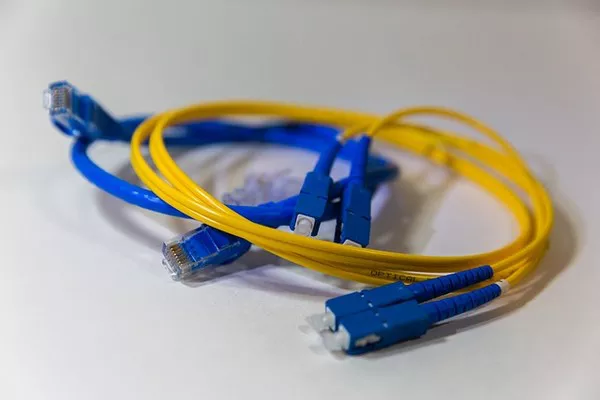When it comes to electrical installations, ensuring safety and proper functionality is paramount. Selecting the appropriate wire for a 240V application is a crucial decision that directly impacts the efficiency and reliability of the electrical system. Whether you’re undertaking a residential project or a commercial endeavor, understanding the types of wire suitable for 240V circuits is essential.
The Basics of 240V Electrical Systems
A 240V electrical system, commonly used for high-powered appliances and equipment, requires the careful selection of wiring materials to meet the demands of higher voltage levels. Unlike the standard 120V circuits, a 240V system consists of two hot wires, each carrying 120V of potential difference, resulting in a total of 240V when combined. These systems are typically employed for heavy-duty devices such as ovens, dryers, air conditioners, and water heaters.
See Also: Choosing the Right Type of Wire for Outlets: A Full Overview
Considerations for Wire Selection
Several key factors influence the choice of wire for a 240V application. These considerations ensure not only the safe transmission of electricity but also the longevity and performance of the electrical system.
1. Wire Gauge (AWG):
The wire gauge is a critical aspect to consider as it directly relates to the amount of current the wire can handle. The National Electrical Code (NEC) provides guidelines for selecting the appropriate wire gauge based on the current load and length of the circuit. For 240V circuits, thicker wire gauges (lower AWG numbers) are typically necessary to accommodate the higher voltage and potential current.
2. Insulation Material:
The insulation of the wire protects it from external factors and prevents potential electrical hazards. For 240V applications, thermoplastic (THHN) and thermoset (THWN) insulation materials are commonly used. These materials offer excellent resistance to heat, moisture, and chemicals, making them suitable for various environments.
3. Copper vs. Aluminum:
Copper and aluminum are the two main materials used for electrical wiring. Copper is an excellent conductor and is preferred for most 240V applications due to its superior conductivity and corrosion resistance. Aluminum, while less conductive, is often used in large-scale installations where cost-effectiveness is a priority.
4. Voltage Rating:
When selecting wire for a 240V circuit, ensure that the wire’s voltage rating exceeds the system’s voltage. This provides a safety margin and minimizes the risk of electrical breakdown.
5. Current-Carrying Capacity:
The wire’s current-carrying capacity should align with the circuit’s requirements to prevent overheating and potential damage. Proper sizing of the wire ensures that it can handle the load without exceeding its rated capacity.
Types of Wire Suitable for 240V
1. THHN/THWN Wire:
Thermoplastic High Heat-Resistant Nylon (THHN) and Thermoplastic Heat and Water Resistant Nylon (THWN) wires are versatile choices for 240V applications. They are well-suited for both indoor and outdoor installations, offering resistance to heat, moisture, and chemicals. THHN/THWN wires are available in various sizes to accommodate different current loads.
2. NM-B Cable:
Non-Metallic Sheathed (NM-B) cable, also known as Romex, is commonly used for residential wiring. It consists of multiple conductors and is suitable for 240V circuits within homes. NM-B cable is convenient for interior applications where protection from external factors is not a concern.
3. MC Cable:
Metal-Clad (MC) cable provides added protection due to its metal sheathing. It is often used in commercial and industrial settings where durability and mechanical protection are crucial. MC cable is available in different configurations, making it adaptable for various installation methods.
4. USE Cable:
Underground Service Entrance (USE) cable is designed for outdoor and underground applications. It is commonly used for outdoor lighting, submersible pumps, and other outdoor 240V installations. USE cable is built to withstand moisture and environmental challenges.
5. SE Cable:
Service Entrance (SE) cable is used for both overhead and underground service entrances. It consists of multiple conductors and is suitable for 240V installations that require ruggedness and durability.
Installation and Safety
While selecting the appropriate wire is essential, proper installation practices are equally vital to ensure safety and compliance with electrical codes. Here are some installation tips to consider:
1.Follow NEC Guidelines: Adhere to the guidelines provided by the National Electrical Code for wire sizing, installation methods, and conduit requirements. Compliance with these standards enhances safety and reduces the risk of electrical hazards.
2. Use Conduits: When appropriate, use conduits to protect wires from physical damage and environmental factors. Conduits add an extra layer of protection, especially in areas where wires are exposed.
3. Proper Termination: Ensure that wire terminations are done correctly and securely. Loose or improper connections can lead to overheating and pose a fire risk.
4. Grounding: Proper grounding is crucial for safety. Ground wires provide a path for excess current to dissipate, preventing electrical shocks and potential damage to equipment.
5. Qualified Professionals: Electrical work should be carried out by licensed and qualified professionals who have a thorough understanding of electrical systems and regulations.
In conclusion
selecting the appropriate wire for a 240V application requires careful consideration of factors such as wire gauge, insulation material, voltage rating, and current-carrying capacity. Different types of wire, such as THHN/THWN, NM-B, MC, USE, and SE cables, offer suitable options for various installation scenarios. By adhering to installation best practices and safety guidelines, you can ensure a reliable and efficient electrical system that meets the demands of your 240V circuitry.

